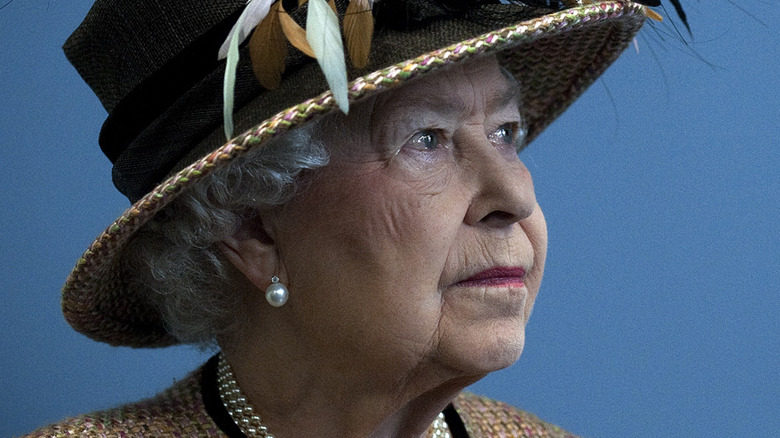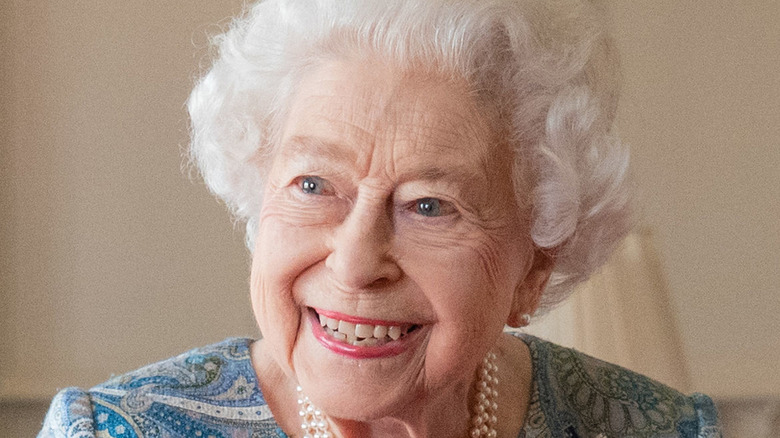The Queen Had A Heavy Hand In Planning Her Upcoming Funeral
The death of Queen Elizabeth II triggered the start of multiple "operations" which she had a role in planning.
The most well-known is Operation: London Bridge, which dictates the plans for the queen's funeral, down to how royal family members and staff in royal households should dress during the official mourning period. The plans also call for a state funeral, the first since former Prime Minister Winston Churchill's in 1965, the Daily Mail reports.
Before a funeral can happen, however, what's known as Operation: Unicorn has to take place. Leaked by Politico in 2021, Operation: Unicorn is the codename for the plan in place should the queen die at Balmoral Castle in Scotland. At the time, Politico reported that the queen's coffin would be transported to London by train. Before that happens, the queen will be brought from Balmoral to the Palace of Holyroodhouse in Edinburgh, which Vogue explains is the official residence of the monarch in Scotland. After, she will be taken to St. Giles' Cathedral by a procession, where she will stay for 24 hours.
According to The Guardian, there is also a backup plan should the queen's coffin need to be transported by plane rather than train. Called Operation: Overstudy in Politico's leaked plans, details include a processional to and from Buckingham Palace.
Some details, such as how long the national mourning period will be, were left to be decided by King Charles III. However, the majority of the funeral planning was done by the queen.
Queen Elizabeth II's role in planning her own funeral before she died
While planning for Queen Elizabeth II's funeral started the day she ascended the throne, it wasn't until 2018 that major meetings about what would happen when the queen died began. As The Times reports, ministers led a "secret Whitehall exercise" in order to "prepare for 10 days of national mourning" in the event of the monarch's death.
Planning included preparing for what they expect will be "unprecedented crowds and travel chaos" as London becomes "'full' for the first time," Politico reports. According to their findings, there was major concern over crowd control. Already, we've seen announcements made about what mourners should do with tributes.
According to The Daily Mail, the queen specifically requested her funeral be held at Westminster Abbey, rather than St. George's Chapel, where the funeral for Prince Philip, the Duke of Edinburgh, was held. Not only can the Abbey accommodate a much larger number of people — 2,000 versus the 800 St. George's can hold — but it is also where Elizabeth got married and was crowned. Queen Elizabeth will be buried at St. George's Chapel with her family and Prince Philip.
The Saturday morning following King Charles III's ascension ceremony, the BBC confirmed that the Queen's funeral would be held at Westminster Abbey on September 19, 2022. It was also announced the day of the funeral would be a national holiday. More details are expected in the coming days.

